I recently recieved the following email and since I get these question often I thought I’d share the answers in a public post.
From:
Chad Smith
Message:
Mr. Hodges,
I’m not sure if “fan” is the right word, but I’ve certainly been an
appreciater (if that’s a word) of your work for quite a few years now.
I’m sure you probably have better things to do than shoot the breeze
with some random e-mailer, but there have been a few questions that
I’ve found myself asking every since the first time I played Doom64.
After having gladly shelled out money for your FLAC soundtrack (great
idea, by the way) I couldn’t help but take the opportunity to finally
ask these burning questions, if you would humble me with a response
(or not – I know you’re a busy guy).
I am always happy to answer questions and am grateful that folks take the time to ask.
1. Did Midway give you any direction on the music for the game, or did
they just say “have at it”? What was their general reaction to the
finished product, being so vastly different from the typical “Doom
music” – or was it their idea from the start to give it a more
“ambient environmental” sound? Did anyone express any sort of
apprehension to you about the direction you had taken it, or were they
totally onboard with it?
Originally I was asked to compose in the style of the original PC game. Once I started getting to learn the playstation music system, I was convinced that I could not deliver something excellent in that style. The memory restrictions of both the system and from my team were severe (180k for samples and midi file). This small amount of memory would have meant extremly low quality samples and would have made the music sound so cheesy that it would have been comical, not cool. This is often a criticism of the origianl Doom music, that it’s almost comical due to the general midi format. The writing that Bobby Prince did was actually very solid but the delivery media (GM Midi) is simply not condusive to hard rock. I suffered the same problem on older games like Quest For Glory: Shadows Of Darkness. I still cringe when listening to the rock guitar sound on some of those songs.
I continued my experimentation and learning on the playstation music system and discovered that certain samples responded well to low quality sample rates. When these samples were played back lowered in pitch they actually sounded ominous and creepy. The low rate created an audio error know as aliasing which in the context of creepy music sounded like part of the actual intent. The more I kept trying new sounds and fooling around with the tool parameters I became convinced that I could make a really thrilling and creey soundtrack that actually sounded like CD quality…all in 180k of memory.
Once I had completed the first track in this new dark ambient style I was absolutly positive that I had found a style that was perfect for the game. Others were not on board and it took some convincing. The decision was finally approved based on the response of the folks at iD who loved the new direction. They liked it so much that almost all of the iD games after that point adopted my approach.
2. What did you have to work with as far as game content when you
started scoring the game? Was it just concept art, or did you have
some actual in-game footage or an actual demo available to you? The
main reason I ask is because the visuals and your score go SO well
together, it seems like they were created stride-for-stride along side
one another, influencing each other in many ways. It’s really hard for
me to imagine the music being created without having seen ANYTHING
from the game, or the visuals designed without having been influenced
by your score. Unless it was just pure random luck that they
complemented each other so unbelievably well.
In terms of game content I had very little in the beginning…some concept drawings and a few basic level prototypes. Also, the original PC game of course. As I composed I made the material available to the designers. As they designed new levels and art they made sure I had access to them as well. They were awesome folks to work with and we sort of just fed off of each others creativity. Rather than try for a high degree of specificity we were all just trying to hit a common mood and level of intensity that allowed us to be flexible. Some of the music was chosen for certain level simply because it fit into memory. The same is true for reverb settings which ranged from tiny to massive in terms of memry they needed to load.
3. Finally, I have to ask – how in the hell (pun intended) do you get
“in the mood” to create music this dark? Did you turn off all the
lights and look at some of the twisted environmental concept art or
something? It’s just hard imagining these nightmarish tracks so full
of dread being composed in a sunny office in a crowded building. If it
were me I’d probably have to lock myself alone in a dark room to be
able to reach down to the depths that this score manages to scrape.
Getting into the proper mood is crucial to the composing process no matter the genre. Too much music is written from the craft/formula and intellectual point of view…which is why there is so much garbage out there. I can tell within seconds if someone has been vulnerable and exposed their soul in their music. I always prefer music from the heart over music from the head any day. This makes writing dark ambient a very serious undertaking. You have to expose your own fear and allow yourself to be honest about what terrifies you or sets you on edge. As you conceptualize the piece you determine what degree of fear you are trying to convey and what will be used internally to provide a focus for that level of emotion. Once you begin creating the sounds (samples) needed you can even start with sounds that are related to that fear. For example, I used a recording of a bee trapped in a soda can for one piece. I am terrified of bees due to an incident in my early childhood where I was bitten dozens of times on a school playground. Writng that piece was chilling for me as it brought back many fears and was terribly dark and disconcerting. It was a throughly unpleasant experience and my discomfort and fear is the reason the piece was so sucessful. Any artist who is unwilling or unable to channel their emotions into their composing should do the world a favor and quit. Music at it’s heart and soul is pure emotion, not theory and certainly not math. Logistically, I kept my lighting dim, locked my studio door, and focused on allowing the tones and textures of the sounds I was using to pull me into the dark moods before I ever composed one note. Then the pieces would emerge. It usually took several hours to get out of those dark moods and shake off the fears and anxiety those sessions would create. I had to give myself at least a day between sessions because I was concerned that it became more difficult to brignten my moods as the project went on.
I appreciate you giving people a means of getting in touch with you –
I’m sure you’ve gotten questions like these before. It would be unfair
to expect an ultra-lenghty reply, so no worries. If nothing else I’m
just glad to be able to let you know that there are many many people
out there like myself that feel that your work not only kicks ass, but
has played a MAJOR roll – if not THE roll – in the creative success of
the title’s you’ve been apart of. Have a good one!
It’s my pleasure to answer any questions folks have about my music or sound design and I am honored that it means so much to so many. I am commited to putting my best into everything I do and I will always strive to make certain that I deliver something that will stand the test of time. I am now working on some new material that is the exact opposite of the emotions in DOOM and I hope to make it available in a few months. Look for an announcement on this site and at aubreyhodges.bandcamp.com. The title of this new album is “Journey Into The Sacred Places” and will feature an hour of relaxing and peacful “light ambient” music.
I hope I have answered thes question in enough detail and thanks again for taking the time to write.
Regards,
-Aubrey


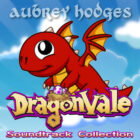
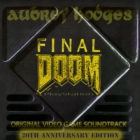
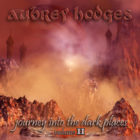
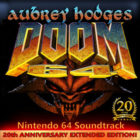
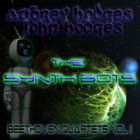
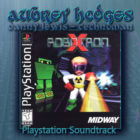
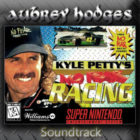
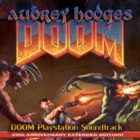
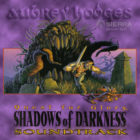
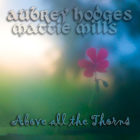
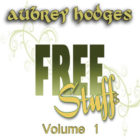
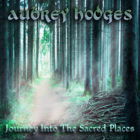
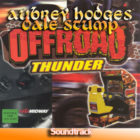
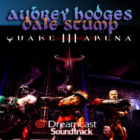
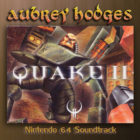
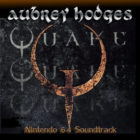
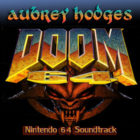
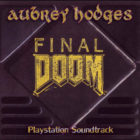
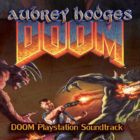
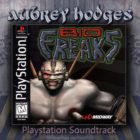
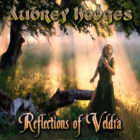
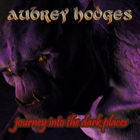

Awesome insight. I’m humbled by the candidness and detail of your answers – I always get the feeling that developers and designers give very “surface” answers when I read interviews about their techniques and thought processes, so it’s refreshing to get a real glimpse into not just the process, but the mindset as well.
Just listening to the music I can tell that it must’ve taken its toll in regards to having to reach down to that dark, uncomfortable place to create the perfect mood. Honestly I feel the same way when I actually play the end product – it takes a while to be able to shake off the darkness and get my mind set back on brighter things. Which is a testament to the talents of the entire team as a whole, especially the audio work.
You’re absolutely right about “paving the way” for the new style of Doom atmospheric music – near the end of Doom 3 when you actually reach “hell”, I couldn’t help but notice how much homage it paid to your earlier work in terms of the audio design. “Standing the test of time” is definitely a good way to put it!
I know that you’ve answered these questions in some form or another many times over the years, so again I thank you for your time and your insight. And I’m surely looking forward to your new album – trust me, I NEED some light, peaceful music after immersing myself in the dark world of DOOM, so it will be a welcome change of pace!
All the best.
legend
looking forward to the new album
Hi Aubrey…sent you an e-mail last week, letting you know what a profound impact you had on this industry. Was great to read your answers to Chad’s questions. I’ve often wondered where the inspiration came from to create such memorable music (at the time PSX Doom was released, I remember thinking about seven levels in “This soundtrack rivals most horror movie soundtracks, let alone other video games!” Almost 20 years later, I think that’s still true!) At the time it was THE most amazing in-game music I had heard in a video game, along with the original Panzer Dragoon (Sega Saturn).
I have a PSOne with a 5″ LCD screen…the screen and speakers are terrific, and it allows me to play PSX Doom pretty much anywhere I want. I was jonesin’ to play Doom again (every so often I get the urge to dive back in), and 95% of the reason I DO get that urge is your soundtrack…it adds SO much to the Doom experience…so much so that the now-primitive visuals and simplistic gameplay still feel satisfying…and creepy. Not only does the game/music tandem allow me to zone in completely into the world of Doom all of these years later, I STILL jump when I get snuck up on by an imp I somehow forgot about!
Sadly, my PSOne screen went kaput (sound works fine, but no picture), so I ordered another one (due to arrive next week). To satisfy my Doom craving, I decided to download the PC version of Doom to my XBox 360. Nothing against Bobby Prince, and I must admit that the 3DO remixes of his tunes are pretty damned cool, but the Prince soundtrack just takes so much of the suspense and creepiness out of Doom…the almost cheery Hangar tune changes the entire mood and feel of the game entirely. From the PSX Doom intro tune to YOUR Hanger composition, I felt like I was in deep shit the minute I turned on the power! I know the PC/360 version of Doom has nicer, cleaner, and more varied textures than its PSX counterpart, and the framerate is more consistent, but something about it all just feels WRONG, and for me that starts with Bobby Prince’s soundtrack. Once you go dark and ambient, it’s hard to go light and midi, even if the PC/360 version is technically the “better” Doom overall.
Just out of curiosity, which track specifically has the bee in the soda can?
Thanks for the compliments regarding my music, it’s always nice to hear from people who understand the emotional experience I was crafting. I enjoy Bobby Prince’s music very much and I loved the Doom experience when it was first released. The darker nature of the Playstation version along with a few other factors played a huge role in why I took the franchise in a different direction. I will be posting a new blog post very soon that answers this in greater detail. The track that uses the bee in a soda can sample is Mind Massacre and is located here: http://aubreyhodges.bandcamp.com/track/mind-massacre-level-computer-station
-Aubrey
Happened to be messing around on the ‘net and saw that you had responded to my comment. Funny, I had a feeling it was the Computer Station level that had the bee in the soda can…that track might be hands-down the creepiest one, though it’s hard to pick just one…every one you crafted (along with the ones for Doom 64, though I prefer the PSX compositions by a slight margin) does an excellent job in creating the emotional experience you set out to accomplish. Bravo!
A while back I attempted a primitive mash-up, playing your PSX soundtrack through a laptop while playing the Xbox360 Live version…and though I thought it would be the ultimate, they didn’t really mesh…the original Doom is brighter and has such a different kind of feel to it (PSX is grittier and less refined). The original is less creepy and much more “Let’s go in with all guns blazing!”, while the PSX version (mostly due to the feeling built by your music) creates a more deliberate, “Be careful of what may be lurking around the corner” feel. Your PSX compositions (coupled with the revamped sound effects) just go so well with the PSX atmosphere, which is SO different than the original.
I like some of Bobby Prince’s Doom music, but feel like yours just was a better fit for the overall idea and theme of what Doom should be. Part of that is that my first exposure to Doom was on the non-music version of the Atari Jaguar. The second was PSX Doom, and I’ve already told you how mindblowing that was (especially from the soundtrack standpoint) when I first started playing it. When I heard Prince’s music, I had more of a “huh, what?” reaction, because I was so used to yours. Maybe if I had played Doom extensively with Prince’s contributions first, I would’ve found his work less jarring.
D’oh! I JUST sent an email to Mr. Hodges that in part asked a question that I could have answered myself by reading this! Sorry for being daft and asking about how you get into the mood for making dark ambient music, when the answer was right here haha. In any case, great post, very informative!